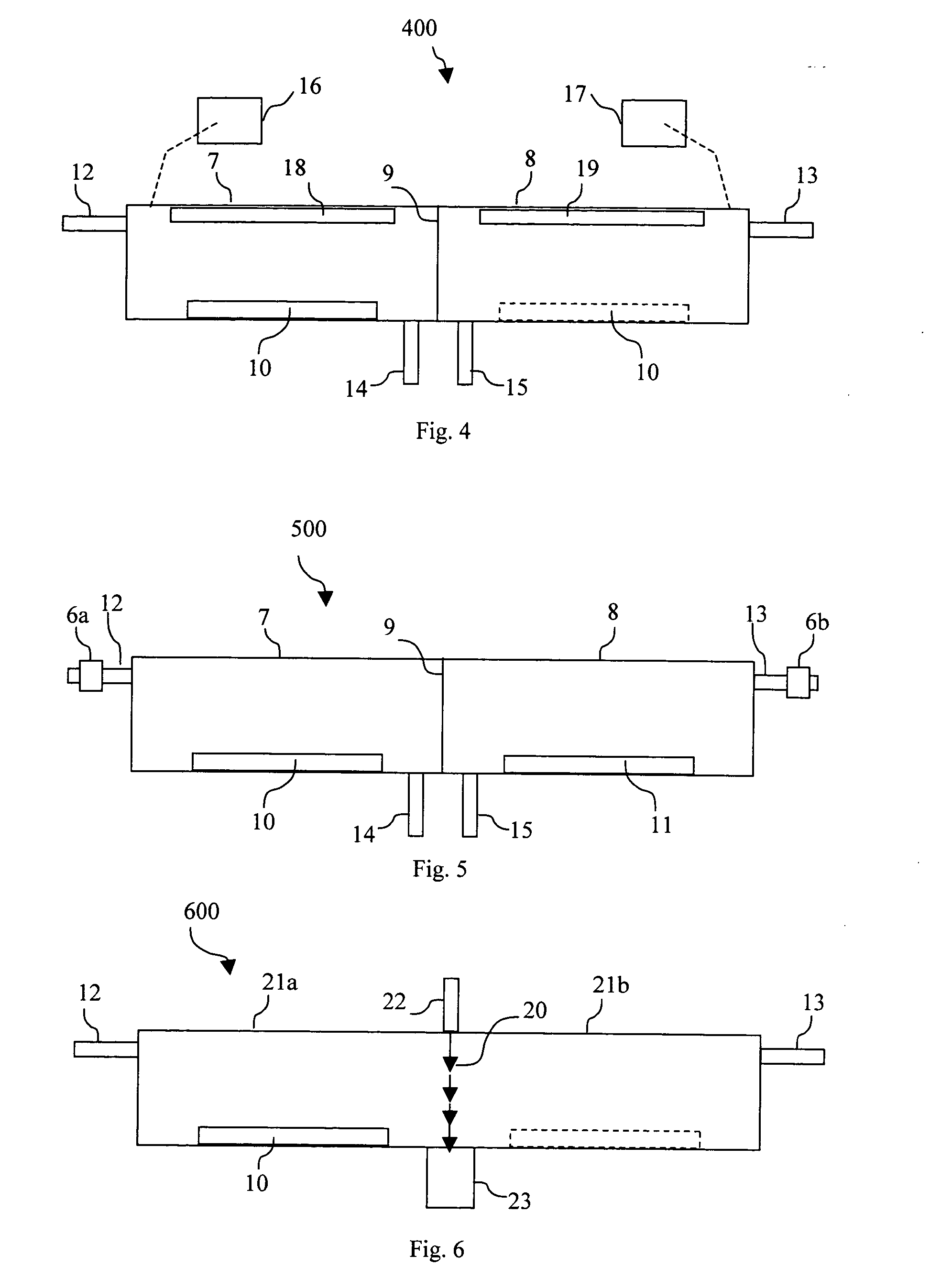Atmospheric pressure molecular layer CVD
- Summary
- Abstract
- Description
- Claims
- Application Information
AI Technical Summary
Benefits of technology
Problems solved by technology
Method used
Image
Examples
embodiment 100
[0035]FIG. 1 is cross-sectional schematic view of an embodiment 100 of the present invention, having a chamber 1 which is capable for operation at atmospheric pressure and deposition of one monolayer per cycle. Heated substrate holder 2 located inside of the chamber and can be set for any temperature in the range of 50-800 0C. Reactant gasses and purge gas (not shown) are introduced to the chamber 1 through manifold 3. Reaction at atmospheric pressure between reactants is much more vigorous than at low pressure. Special precaution is taken to prevent any residue to remain in the chamber, manifolds, valves, etc., at the completion of a mono-layer deposition cycle by flushing out the chamber, manifolds, valves, etc., by a purge gas cycle.
[0036] Reactant and purge gasses in the embodiment 100 leave the chamber 1 through exhaust 4. To assist in evacuation of residual chemicals during each purging cycle, exhaust 4 can be optionally maintained at differential pressure compare to the chamb...
embodiment 200
[0038] A second reactant, purging manifold 3 is provided to deliver reactant and purging gas to chamber 2 in an alternative dual reactant / purge process using the embodiment 200. Purging gas is run through both manifolds 3, 5 simultaneously during a purging cycle in a dual reactant, purging process for embodiment 200. This will prevent reactant residue from remaining in stagnant areas of the reactant manifolds 3, 5.
[0039] A radical generator 6 (dotted lines) operating at atmospheric pressure can be, optionally, added to one or both manifolds. Such a radical generator can be e.g., an inductive thermal plasma torch, a generator based on glow discharge, DC or RF arc, etc.
[0040]FIG. 3 is a schematic view of an embodiment 300 of the present invention apparatus that is capable of operation at atmospheric pressure and has a first chamber 7 and a physically separate second chamber 8. A solid wall 9 in embodiment 300 separates Chambers 7 and 8. Chambers 7 and 8 are each dedicated separately ...
embodiment 900
[0056] Referring now to FIG. 9, there is shown another embodiment 900 of the present invention. In some monolayer deposition processes situations it could be more beneficial to have not just one linear injector, but instead to have two or more per chamber. Embodiment 900 has such pairs of injectors in each chamber, i.e., a first injector 31a, and second injector 32a in the first chamber 28a and another first injector 31a, and another 2nd injector 32a in the second chamber 28ba. Purity and quality of the films deposited on substrates 26a -26f depends on a number of things, particularly how well the substrate surface is saturated with reactant in each chamber, the degree of completion of the chemisorptions at each available surface site and level of removing physisorbed reactant for the next chemisorption step, as we described above.
[0057] An additional process step that removes physisorbed reactant left after first injector, 31a, and −31f will greatly improve film quality. This is ac...
PUM
| Property | Measurement | Unit |
|---|---|---|
| Length | aaaaa | aaaaa |
| Volume | aaaaa | aaaaa |
| Pressure | aaaaa | aaaaa |
Abstract
Description
Claims
Application Information
 Login to View More
Login to View More - R&D
- Intellectual Property
- Life Sciences
- Materials
- Tech Scout
- Unparalleled Data Quality
- Higher Quality Content
- 60% Fewer Hallucinations
Browse by: Latest US Patents, China's latest patents, Technical Efficacy Thesaurus, Application Domain, Technology Topic, Popular Technical Reports.
© 2025 PatSnap. All rights reserved.Legal|Privacy policy|Modern Slavery Act Transparency Statement|Sitemap|About US| Contact US: help@patsnap.com



